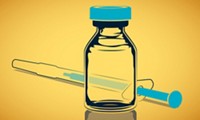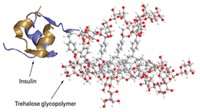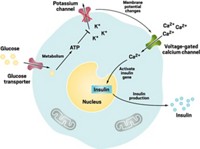Advertisement
Grab your lab coat. Let's get started
Welcome!
Welcome!
Create an account below to get 6 C&EN articles per month, receive newsletters and more - all free.
It seems this is your first time logging in online. Please enter the following information to continue.
As an ACS member you automatically get access to this site. All we need is few more details to create your reading experience.
Not you? Sign in with a different account.
Not you? Sign in with a different account.
ERROR 1
ERROR 1
ERROR 2
ERROR 2
ERROR 2
ERROR 2
ERROR 2
Password and Confirm password must match.
If you have an ACS member number, please enter it here so we can link this account to your membership. (optional)
ERROR 2
ACS values your privacy. By submitting your information, you are gaining access to C&EN and subscribing to our weekly newsletter. We use the information you provide to make your reading experience better, and we will never sell your data to third party members.
ACS Meeting News
Injectable system responds when blood sugar drops low
Responsive materials for diabetes can release a hormone when glucose drops
by Laurel Oldach
March 20, 2024
| A version of this story appeared in
Volume 102, Issue 9
Managing diabetes has gotten easier over the years—but maintaining a healthy blood sugar level can still feel like walking a tightrope. Over time, high blood glucose can cause medical problems, so many people with diabetes rely on the hormone insulin to reduce circulating glucose. But using too much insulin can cause a drop in blood sugar that can develop into a life-threatening emergency. At such moments, the best treatment is glucagon, a hormone that releases stored sugar, opposing insulin.

At ACS Spring 2024 on Tuesday, University of Notre Dame professor Matthew Webber described his work on designing responsive, injectable materials that hold glucagon and release it when glucose concentration drops in their surroundings. Many research groups, including his own, are developing materials that release insulin in response to sugar spikes. But to generate a material that responds to the absence rather than the presence of a molecule, Webber said, is “a little bit of a paradigm shift” for the field.
In a presentation to the Biochemical Technology division, Webber described three chemical approaches researchers in his lab spearheaded by graduate student Sihan Yu have invented to sequester a glucagon drug in responsive hydrogels and coacervates.
The researchers are testing the materials in diabetic animals; each one, they have observed, can reduce the crashing blood sugar that the animals experience. But the materials also have some problems, including slow response kinetics and a tendency to leak glucagon in instances when it is not needed, which can lead to undesirably high blood sugar.
Kaylin Earnest, a medicinal chemist at the University of Cincinnati Clermont College who attended the talk, told C&EN that even though the materials are not ready to be deployed, they’re an exciting advance. While the absence of sugar is more technically challenging to detect and respond to than an excess, she said, it’s also more urgent for patients. “You can come down from a high, but a low is hard to fix.”
Webber hopes to work toward a combined system that can release both insulin and glucagon when appropriate, just as the pancreas does in people who don’t have diabetes.





Join the conversation
Contact the reporter
Submit a Letter to the Editor for publication
Engage with us on Twitter